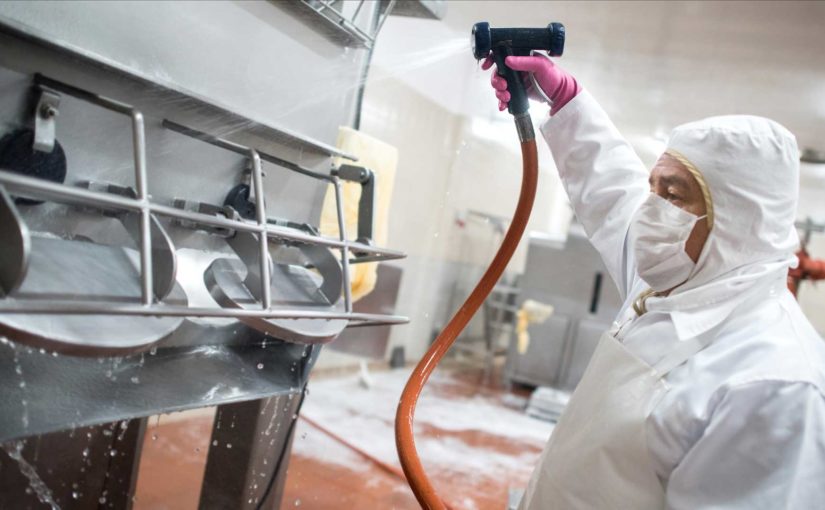Due to their shape, many freezers on the market have hidden and hard-to-reach areas where bacteria can grow. A freezer with lots of difficult-to-clean corners and crevices could contribute to food safety issues.
A freezing equipment vendor can help you select equipment utilizing a design that complements facility sanitation protocols and prevents pathogens and bacteria from growing.
Dr. Bill Adams, Bill Baker and Stephen Bilger, experts in the food and beverage industry at Airgas, an Air Liquide company, share advice on how to overcome the top sanitation challenges in food freezing equipment through smart equipment design.
The shape of bacteria to come
According to Adams, Baker and Bilger, the exposed bolts and screws of equipment are a prime location where potentially dangerous bacteria can hide, leading to a high risk of food contamination. This is especially true for traditional box-style freezers, as they have sharp edges and corners where moisture and buildup can go unnoticed, resulting in the growth of harmful pathogens.
Today’s manufacturers are creating more modern, curved-surface food freezers to make cleaning easier and more efficient. For proper safety and sanitation, it’s important that your freezer walls and floor base are sloped and accessible for easier cleaning.
Freezer design with hygiene and efficiency in mind
Food Freezer manufacturers are not always obligated to comply with standards established by the United States Department of Agriculture (USDA), but it is in their best interest. Reputable, experienced food equipment vendors can guide food companies through the process of expanding their freezing operations with hygiene and food safety in mind.
According to Bilger, “The ease of sanitation is becoming much more prevalent in all food freezers, and companies are looking at how fast they can be sanitized. Hygienic freezer designs should provide safe and easy access to all surfaces within. Food freezers designed with hygiene in mind have the added benefit of significantly reducing the time and cost required for sanitation.”
Condensation hazards
Once you’ve chosen the right freezer for your needs, it’s imperative that you take steps to ensure your product—before or after the freezing operation—is not affected by condensation that can drip off of the exhaust and other surfaces. Condensation can occur when the freezer is opened and closed repeatedly or shut down, exposing the product to higher temperatures and potential contamination or pathogens.
Mechanical or cryogenic: Keep your freezing equipment clean
Manufacturers have developed smart designs in both cryogenic and mechanical freezers to help improve sanitation. Mechanical freezers are traditionally used in mass-freezing facilities and are the most well-known in the industry, while cryogenic freezers, a newer option, are becoming the preferred option because they make the freezing process more efficient.
A sanitation pitfall of mechanical freezers is the buildup of frost on freezer coils. Melting frost can lead to excessive water buildup and bacteria growth in the freezer. One way to lessen the amount of frost on mechanical freezer coils is to add cryogenic components to your freezer. By supporting your freezer with a “cryo-mechanical boost,” excessive frosting and melting is avoided–greatly improving sanitation.
Choose the option that is best for your needs
Deciding between mechanical, cryogenic or a mix of both depends on what you’re freezing. In some cases, cryogenic freezing isn’t the best choice. In helping you choose a freezer design optimized for hygiene, your equipment vendor should also make informed recommendations for the type of freezer that best suits your needs.
The design of food-freezing equipment can help you address sanitation issues just as much as your facility protocols. Whether you’re using a cryogenic or mechanical freezer system in your facility, your top priority must always be to keep it clean.
Your equipment vendor’s expertise in sanitation and design can help ensure your mode of food freezing is both efficient and safe. A good vendor will also supply you with the right tools and machinery that help keep your products safe for consumption. If you’re interested in speaking with an Airgas expert regarding food freezing, submit the form to the right.
